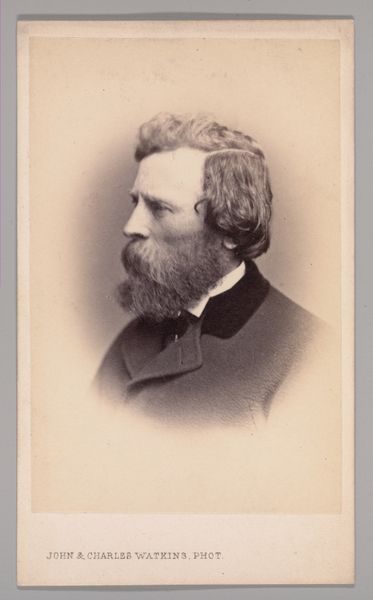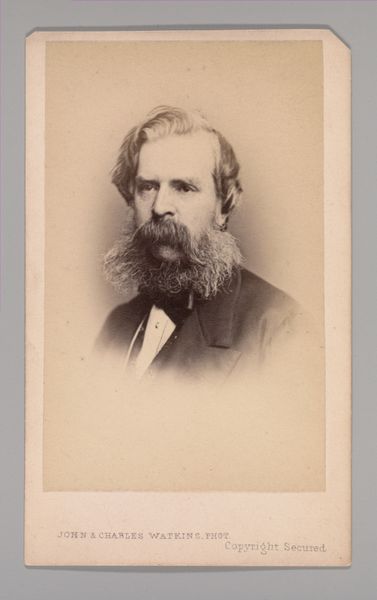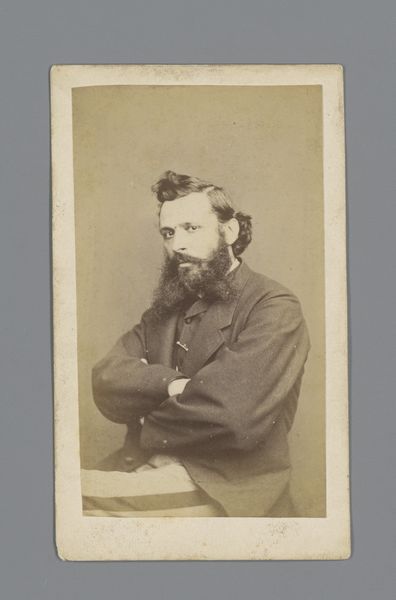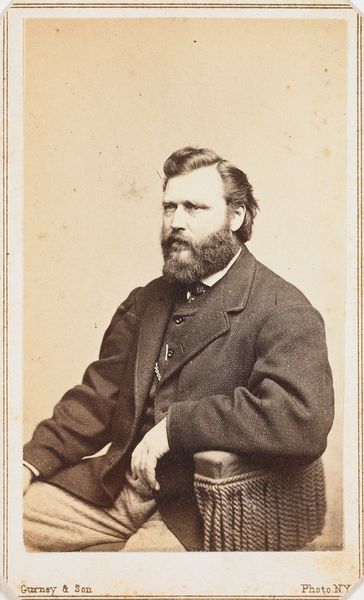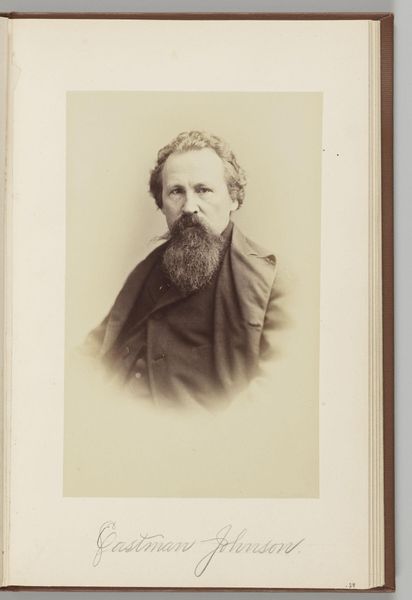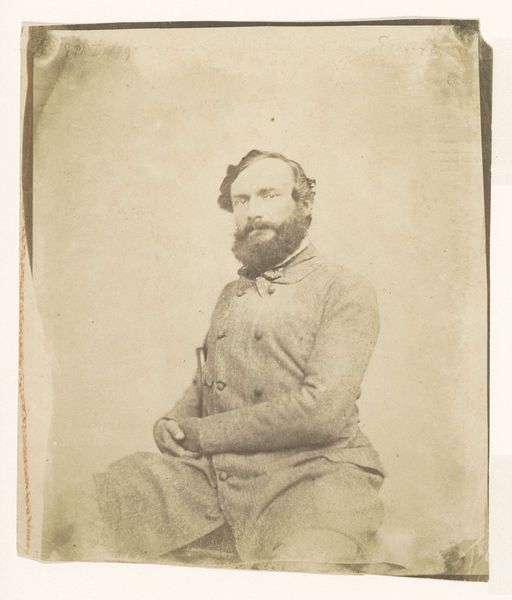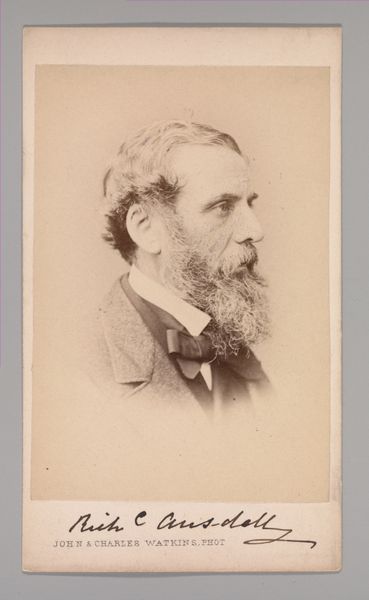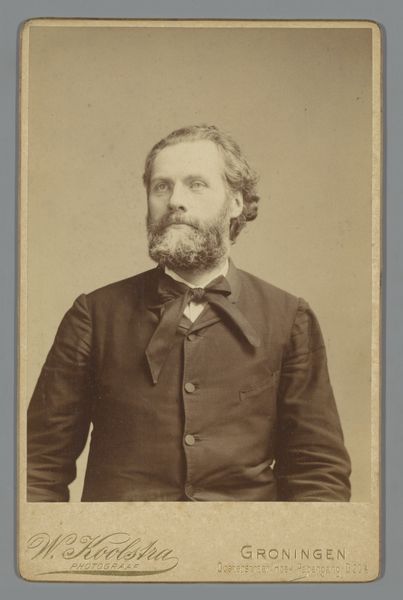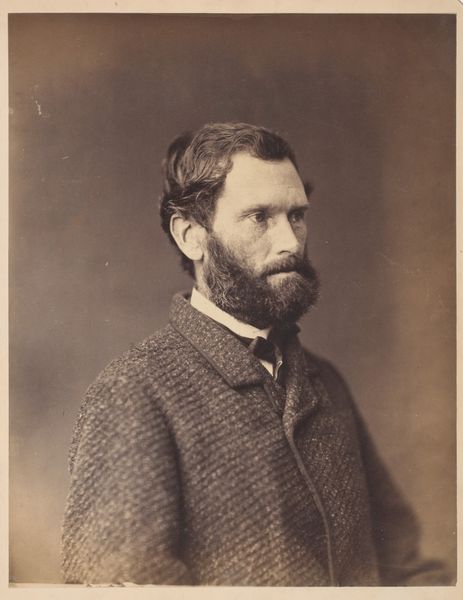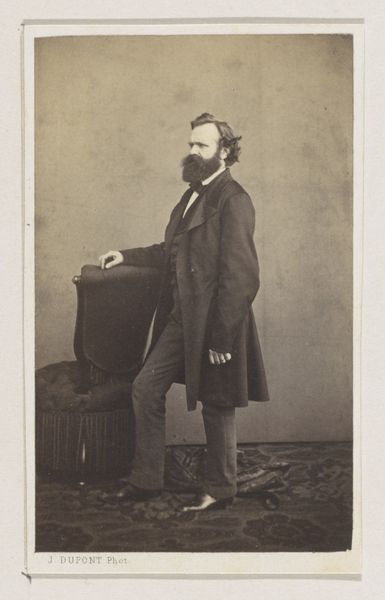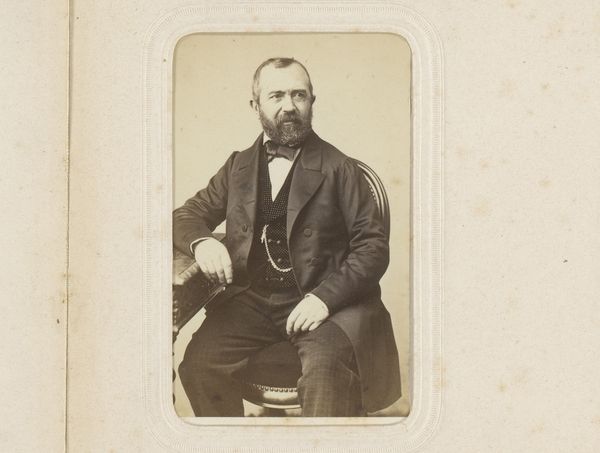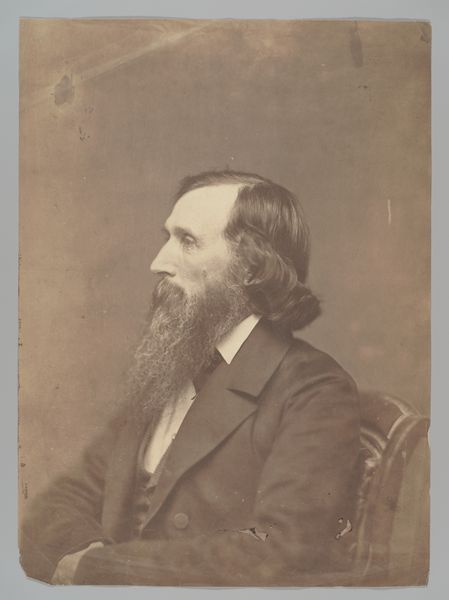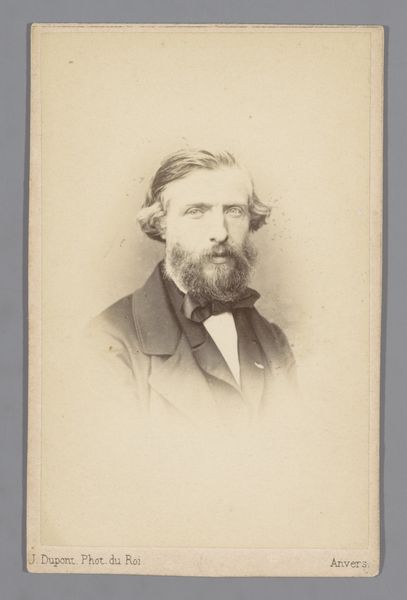
#
portrait
#
person frame the image
#
wedding photograph
#
photo restoration
#
photo element
#
portrait reference
#
strong emotion
#
framed image
#
photographic element
#
portrait drawing
#
fine art portrait
Dimensions: height 102 mm, width 61 mm
Copyright: Rijks Museum: Open Domain
Joseph Dupont made this photographic portrait of the painter Johann Bernhard Wittkamp using the 19th-century process of chemical photography. The sepia tones and the smooth surface were not achieved through the direct touch of the artist's hand in the traditional sense, but rather through the manipulation of light and chemicals on a sensitized surface. The rise of photography coincided with the industrial revolution, offering a new mode of representation that democratized portraiture. Unlike painting, which required the skilled labor of an artist and was accessible mainly to the wealthy, photography offered a relatively quick and affordable means for capturing likenesses. The reproducible nature of photography also aligns with the emerging capitalist modes of production and consumption. Dupont's work raises questions about the value of labor and skill in art. While traditional art placed a premium on the artist's hand, photography shifted the focus to the photographer's eye and technical expertise. By considering these aspects, we can appreciate the complex interplay between art, technology, and society.
Comments
No comments
Be the first to comment and join the conversation on the ultimate creative platform.
